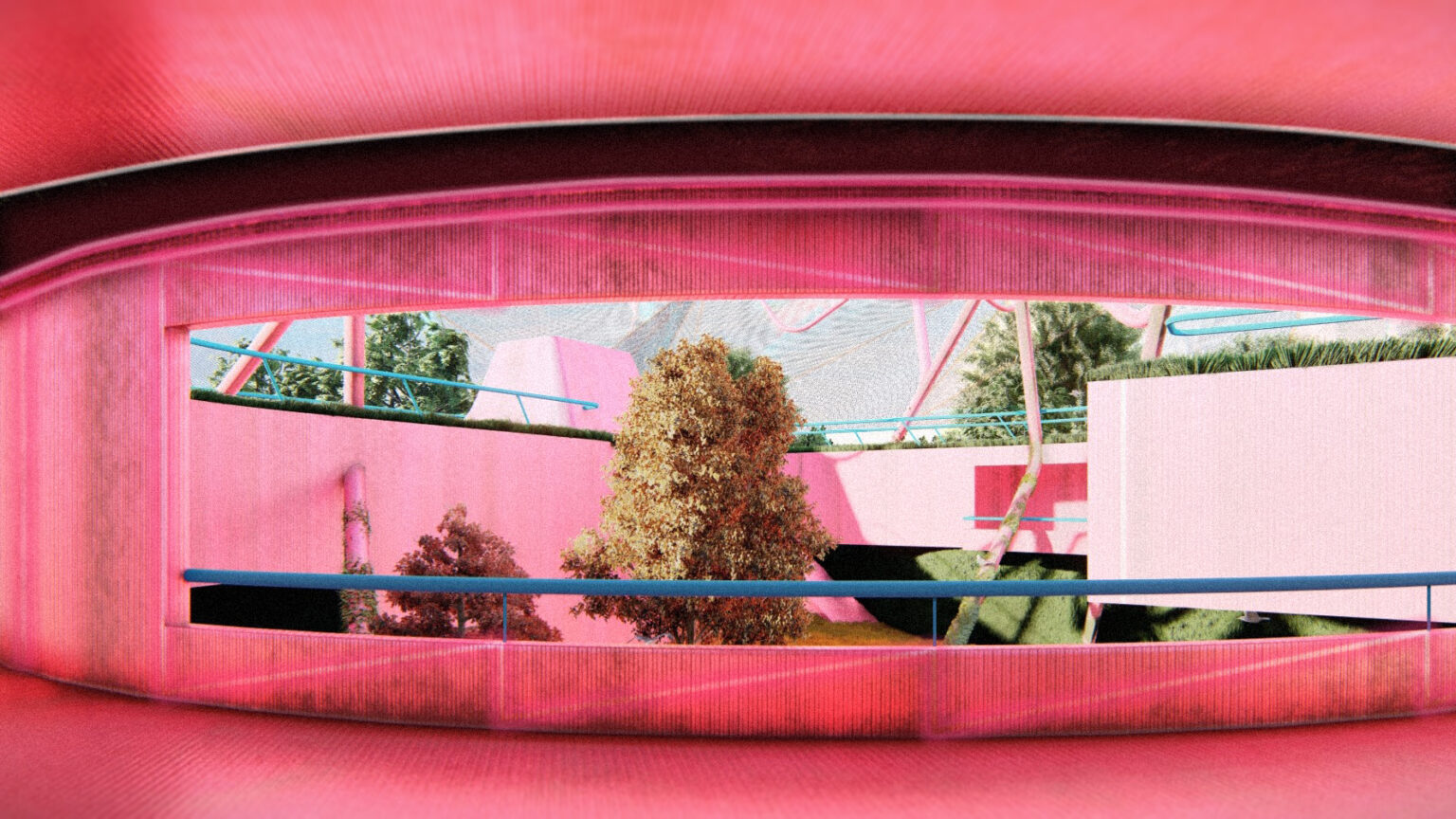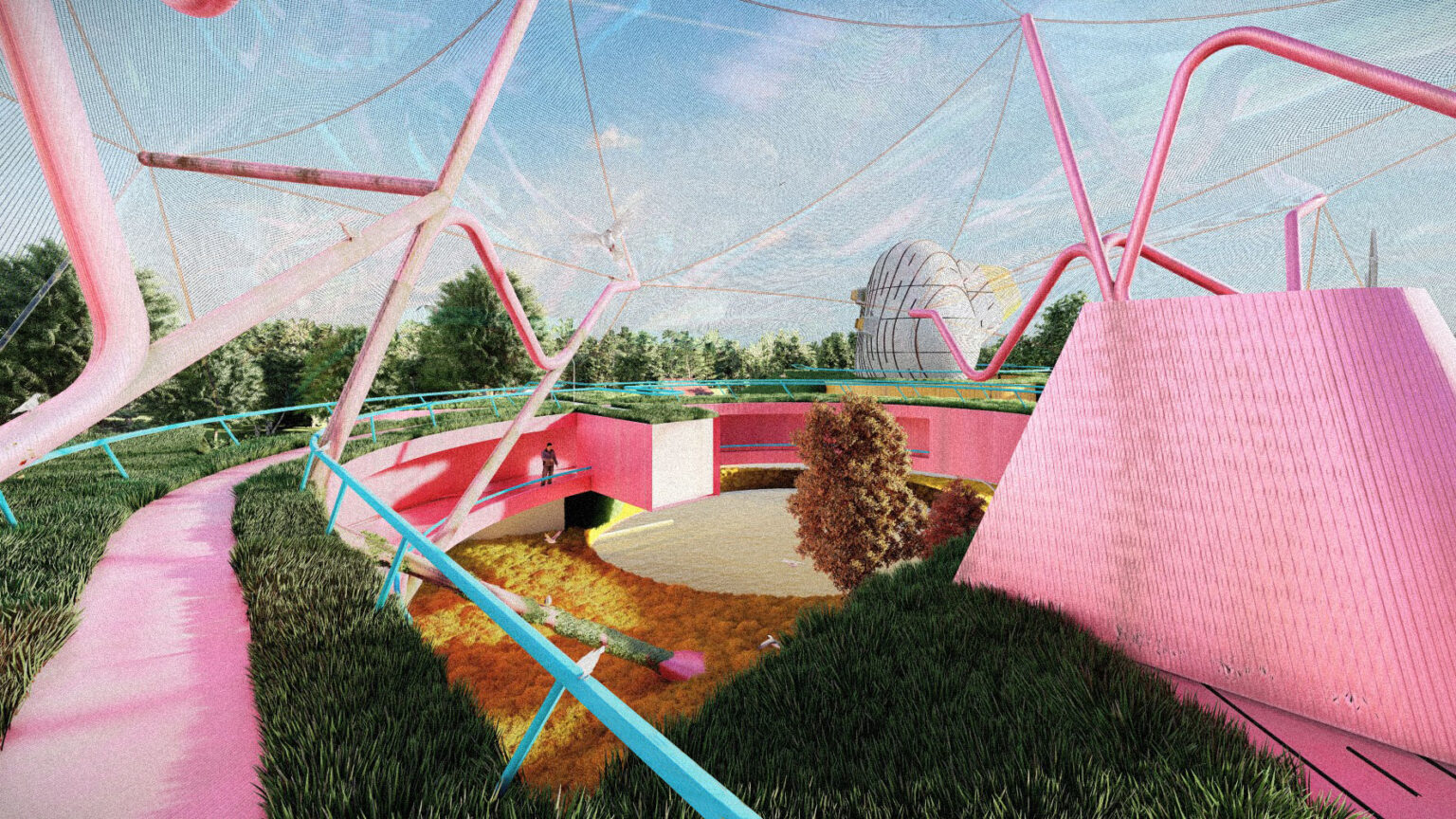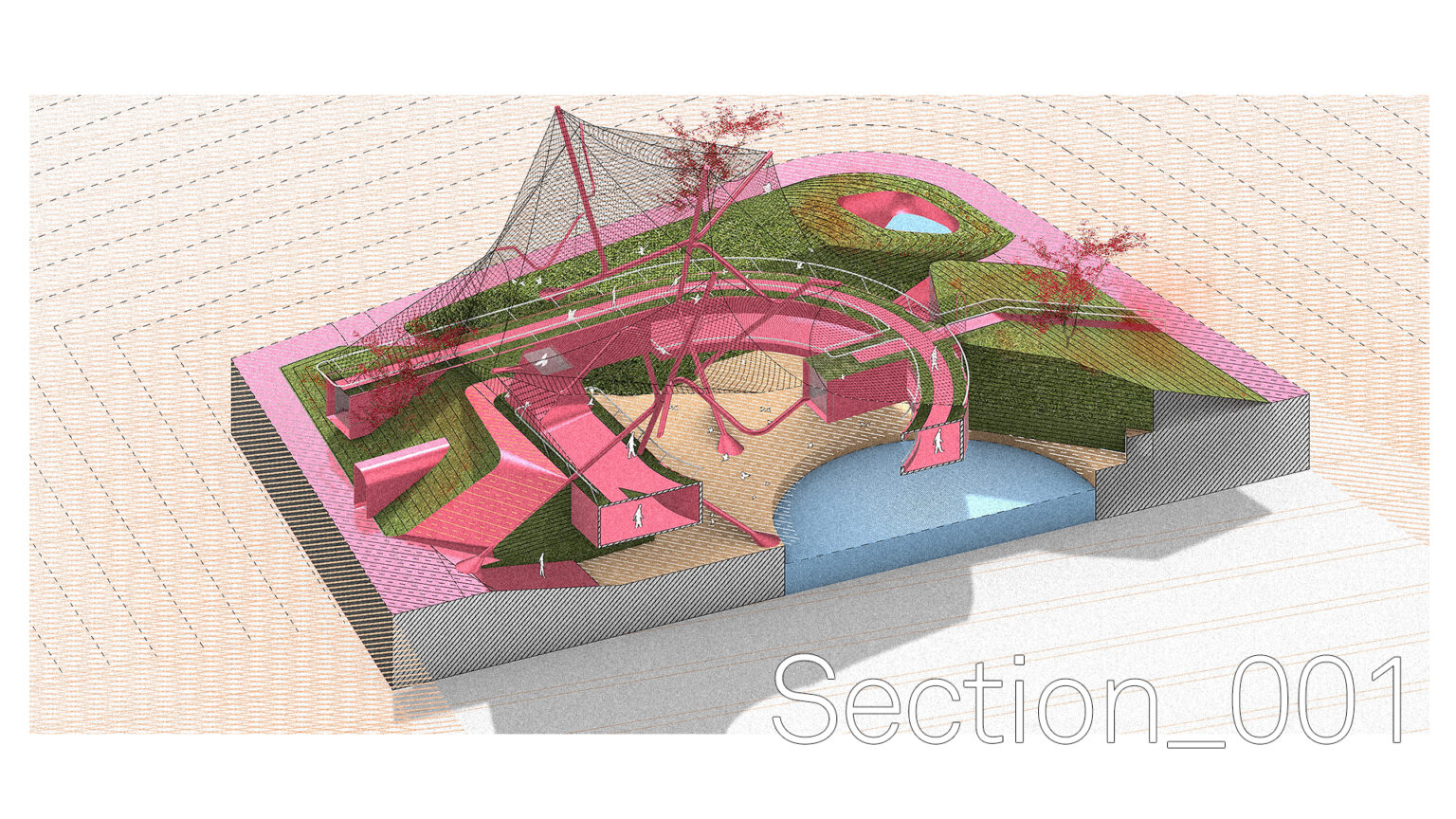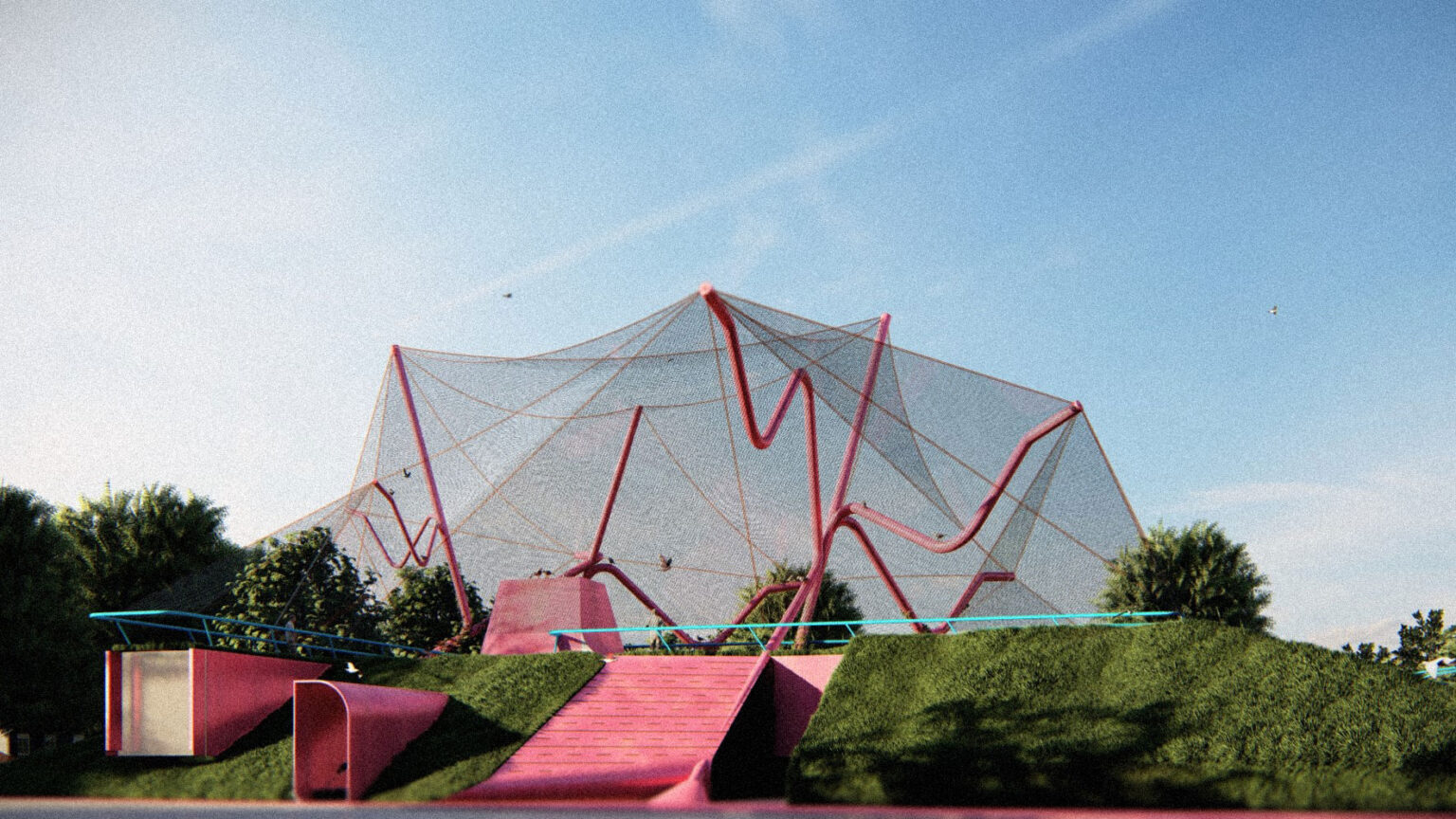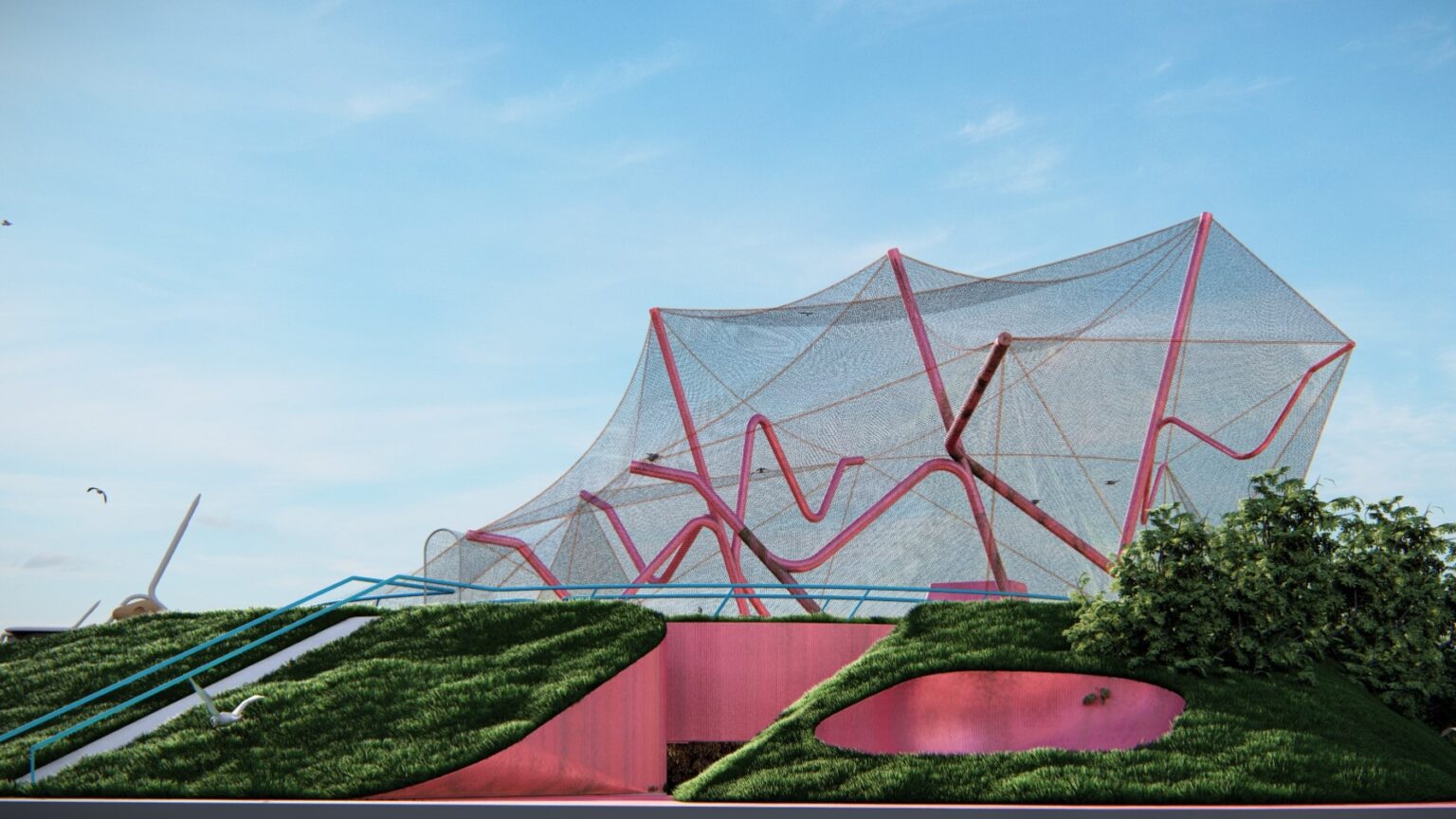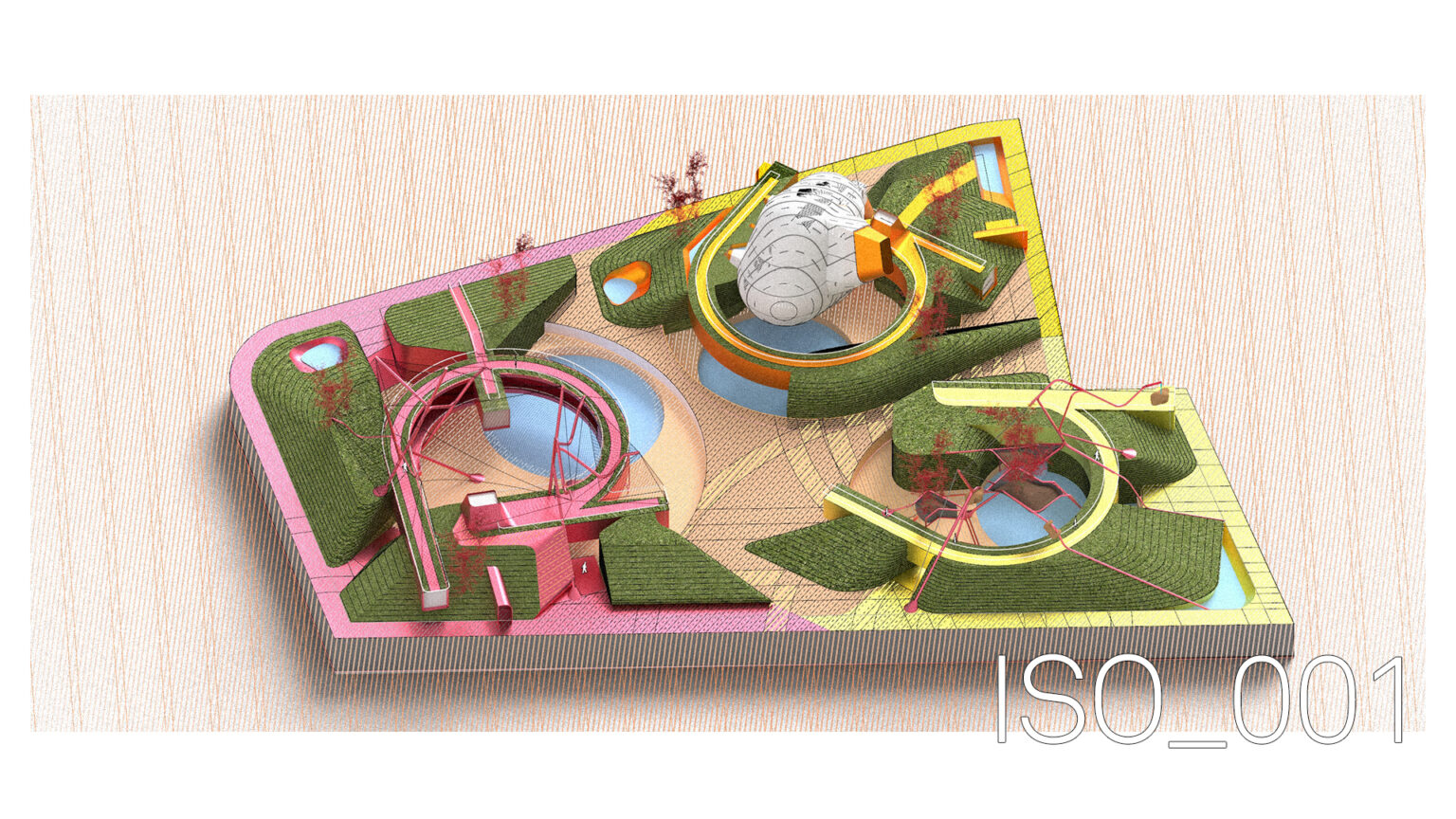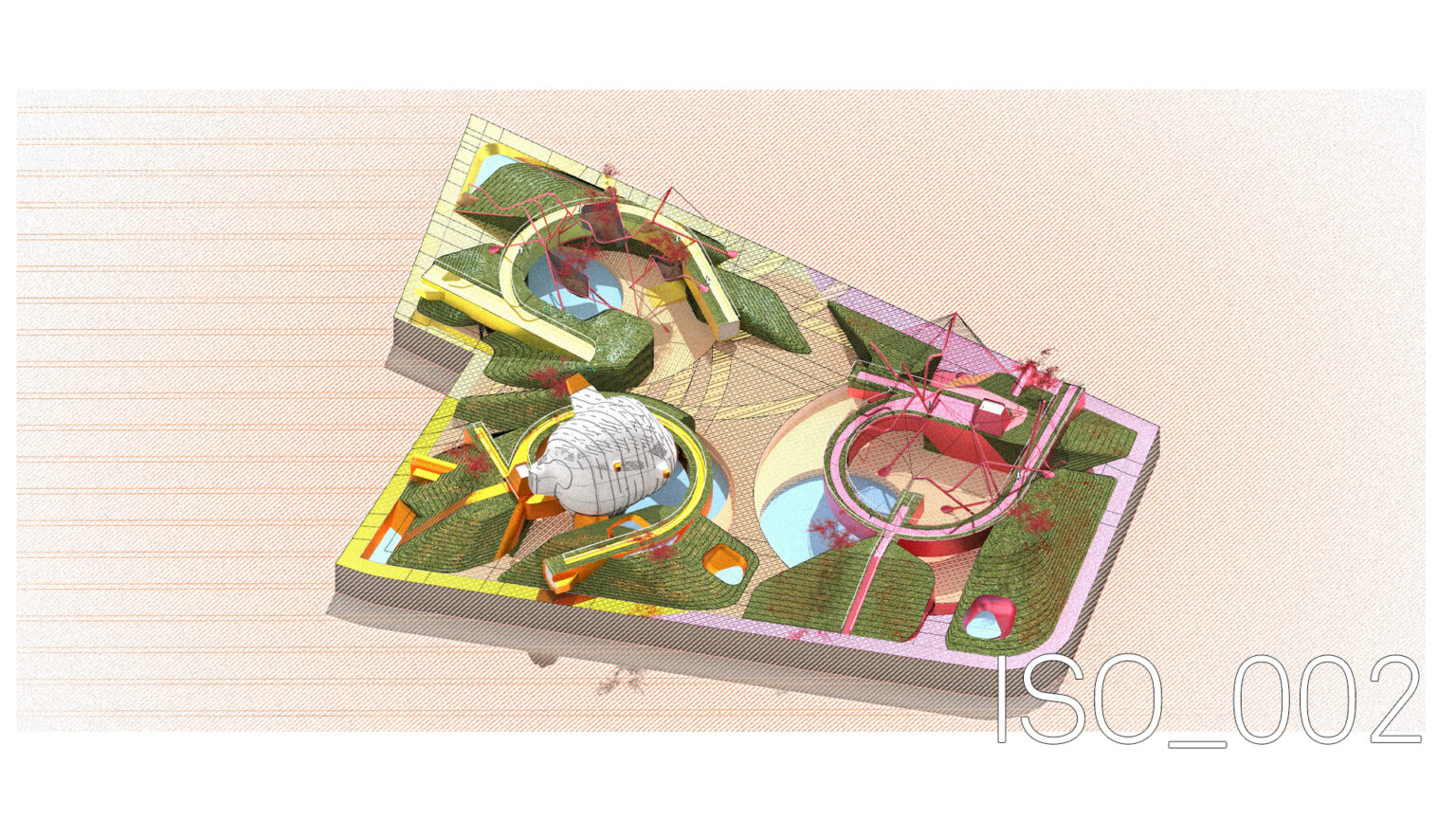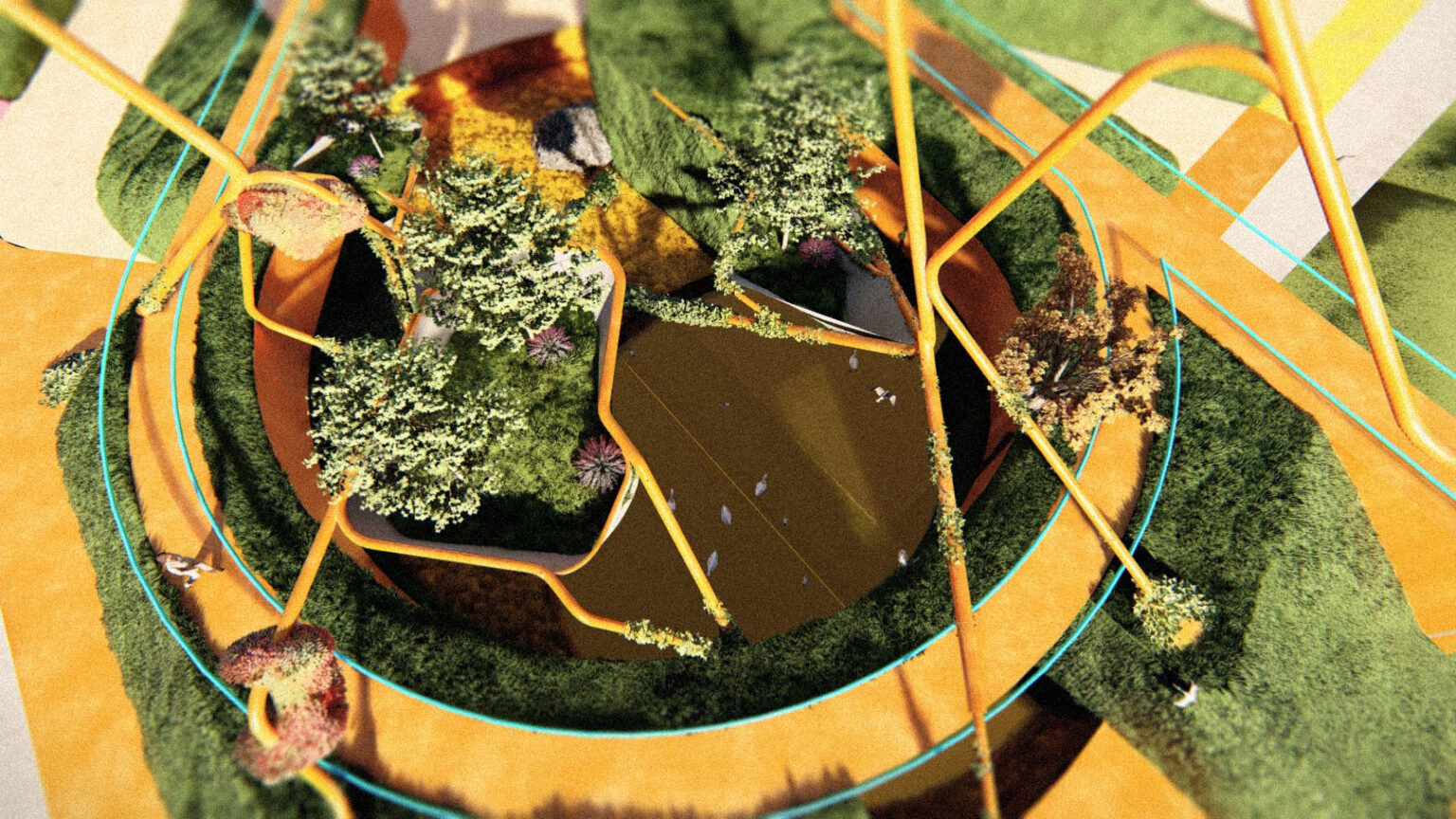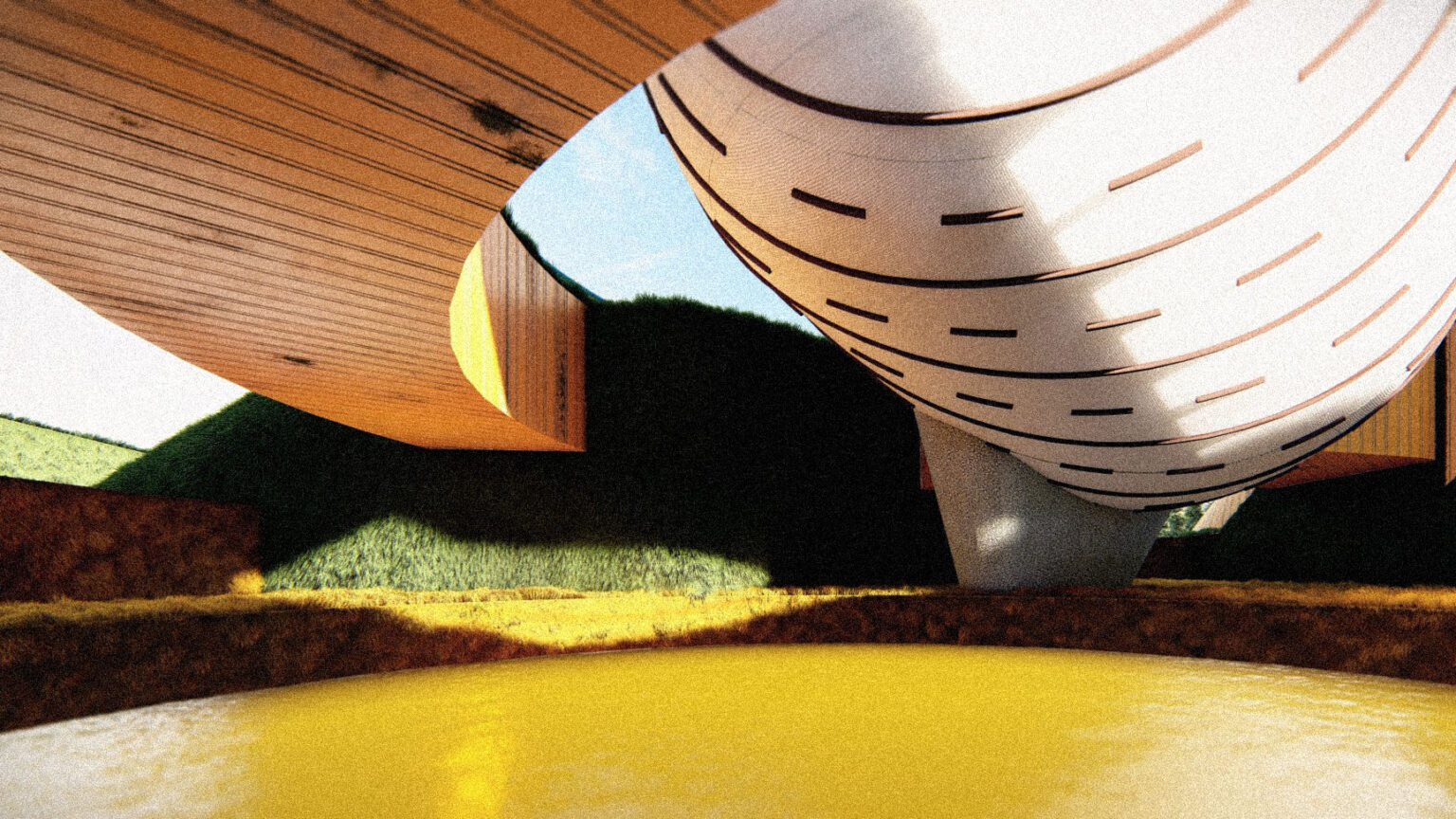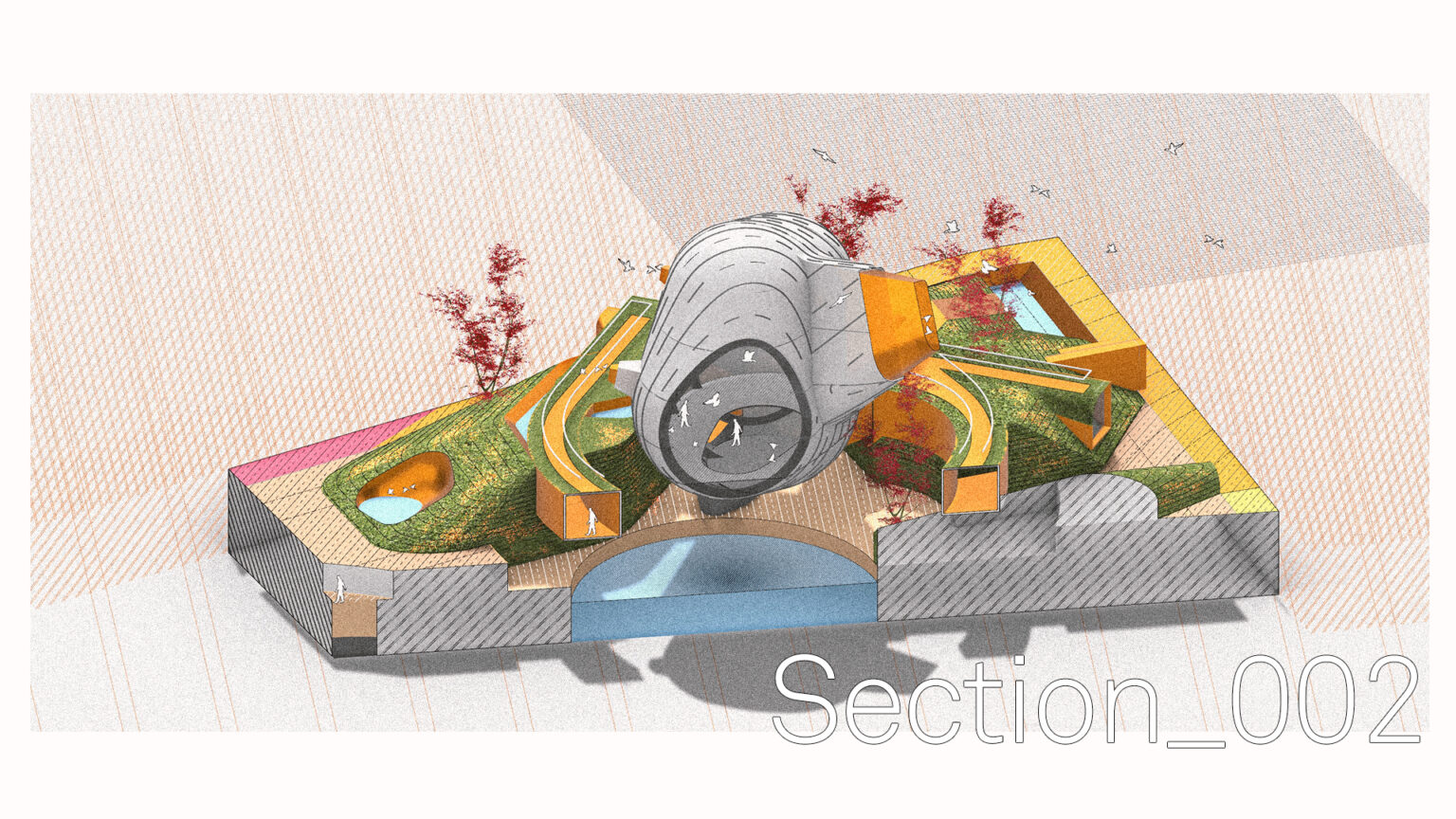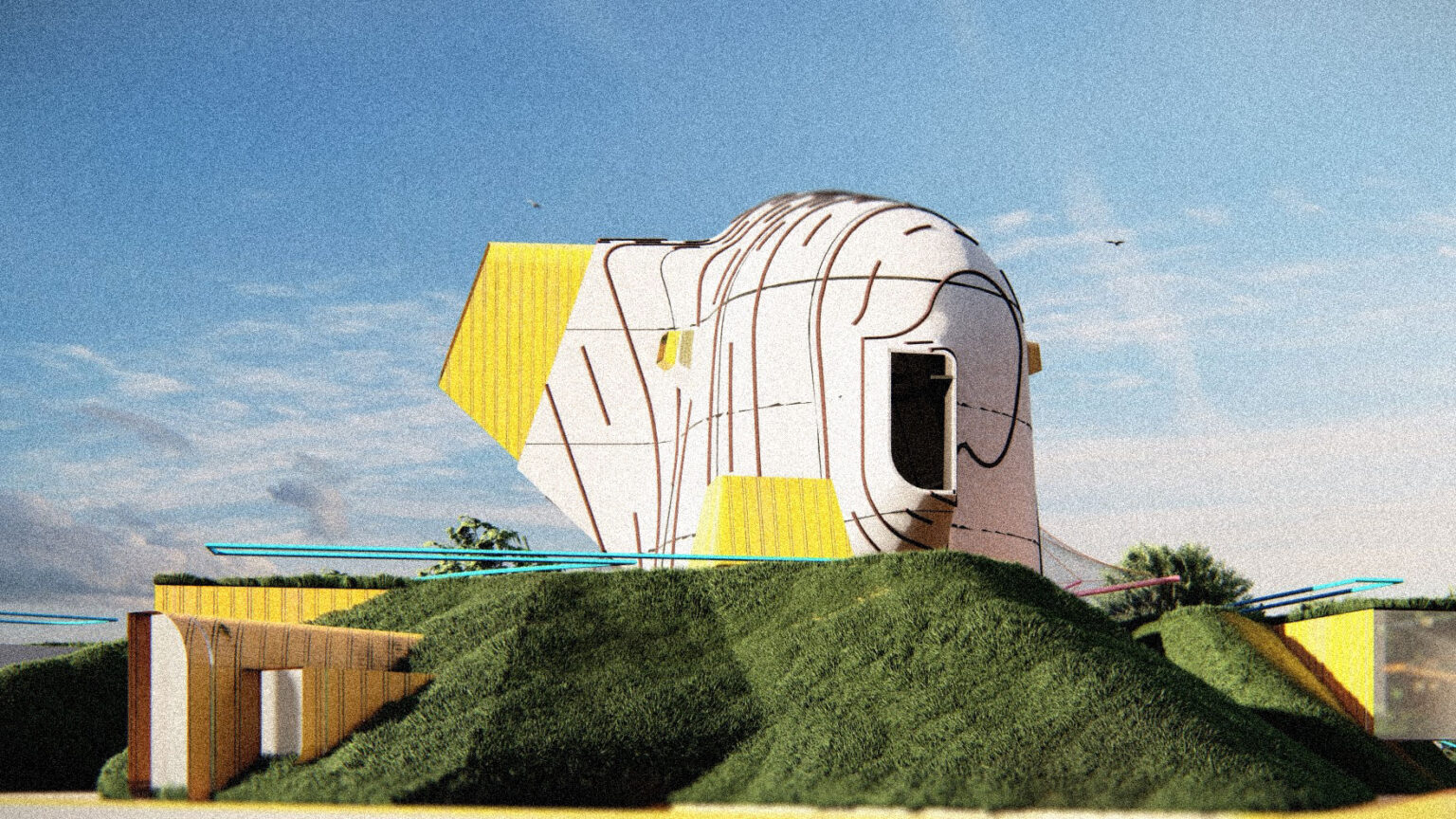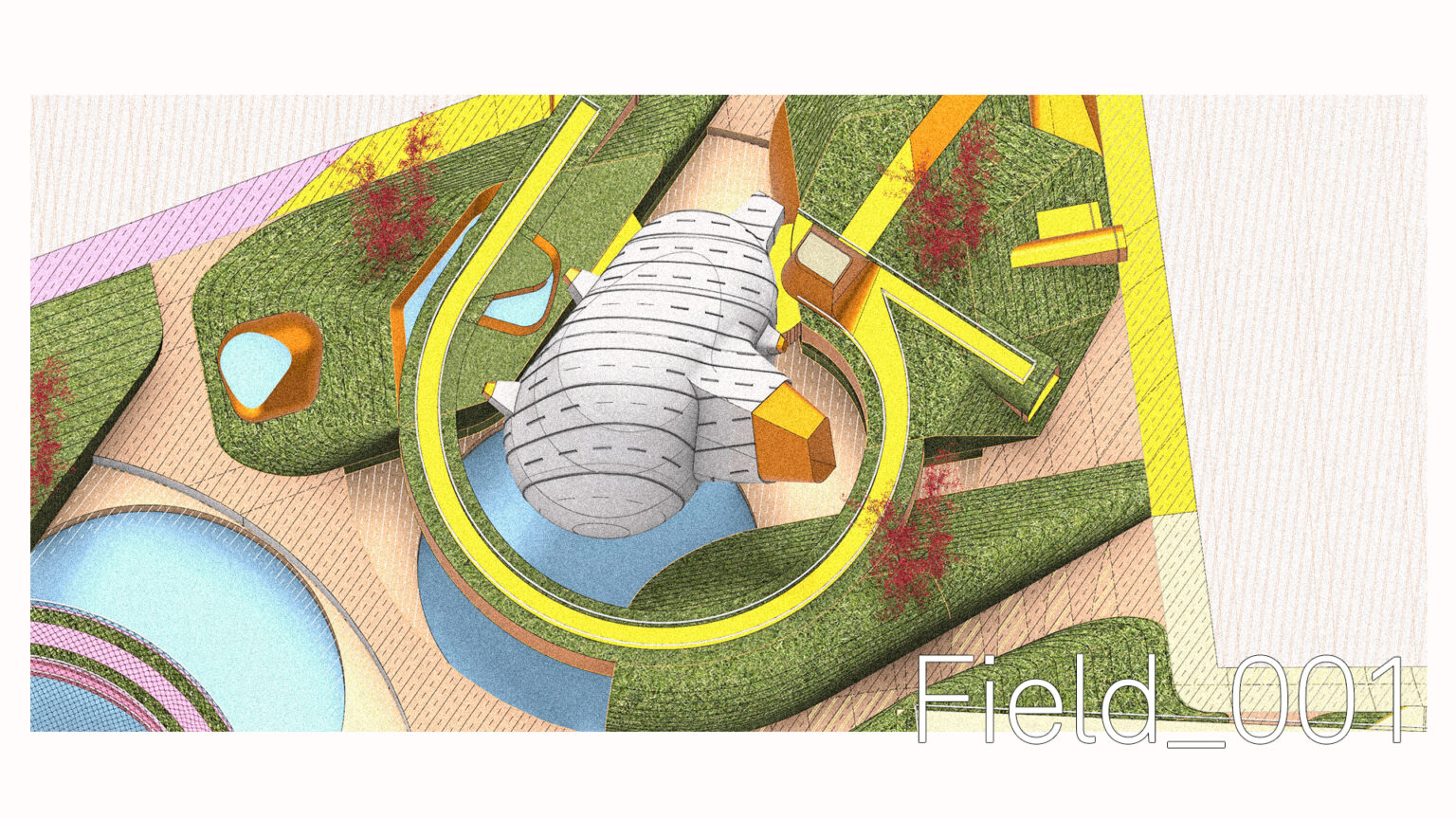Alsharif Khaled Nahas
Digging and Flying a Bird Sanctuary
Artist Statement
Architecture as the mediation between earth and sky. To build, one must excavate a
substructure, then erect a superstructure. In this total act of construction, managing forces through engineering allows us to make decisions on how we engage with geo-kinetics like gravity and rotation.
The proposal is a Horticultural Center located on Governor’s Island. Divided into 6 different predetermined parcel-specific programs, the project deals with the Aviary Parcel. Aviaries are large enclosures for confining birds, and in its conventional function acts as an exhibition space to showcase a variety of bird species. The project intends to drift away from the idea of a cage, and rather becomes a field that acts as a platform or a sanctuary that attracts birds. They come and go as they wish. Free from confinement, as they are meant to be. It kicks-off from a thick 2D world, through an operation of plan-vs-sectional drafting. Controlling curves, offsets, radii, line weights, colors, types, and profiles in the 2D realm instead of cutting the model is more the workflow / ethos of the Project. A series of lines are extracted and offseted from the neighboring parcels to establish a grid system that acts as a field of points, lines, vectors, and geometric curves. The field superimposes 2 and 3D geometries starting the process, essentially a kind of site planning as a graphic design procedure.
The field dramatizes the relation between earth-and-sky by initially elevating the ground
(Horizon line) as a substructure into three separate programmatic regions (Dovecote, Sanctuary, and Nesting platform). The elevated ground is organized in a semi-array manner, holding the edges to create three separate courtyards. A circular circulation platform is placed on top of each courtyard. The platform is supported by its edges through the elevated substructure, creating a flying effect. Finally a superstructure is erected in each programmatic region expressed uniquely by material (Mesh, tensile fabric, steel pipes), color (appealing vs non-appealing to birds), projections (2d and 3d), and spatial qualities (enclosure, transparency, and tension). These expressions respond to the programmatic needs.
substructure, then erect a superstructure. In this total act of construction, managing forces through engineering allows us to make decisions on how we engage with geo-kinetics like gravity and rotation.
The proposal is a Horticultural Center located on Governor’s Island. Divided into 6 different predetermined parcel-specific programs, the project deals with the Aviary Parcel. Aviaries are large enclosures for confining birds, and in its conventional function acts as an exhibition space to showcase a variety of bird species. The project intends to drift away from the idea of a cage, and rather becomes a field that acts as a platform or a sanctuary that attracts birds. They come and go as they wish. Free from confinement, as they are meant to be. It kicks-off from a thick 2D world, through an operation of plan-vs-sectional drafting. Controlling curves, offsets, radii, line weights, colors, types, and profiles in the 2D realm instead of cutting the model is more the workflow / ethos of the Project. A series of lines are extracted and offseted from the neighboring parcels to establish a grid system that acts as a field of points, lines, vectors, and geometric curves. The field superimposes 2 and 3D geometries starting the process, essentially a kind of site planning as a graphic design procedure.
The field dramatizes the relation between earth-and-sky by initially elevating the ground
(Horizon line) as a substructure into three separate programmatic regions (Dovecote, Sanctuary, and Nesting platform). The elevated ground is organized in a semi-array manner, holding the edges to create three separate courtyards. A circular circulation platform is placed on top of each courtyard. The platform is supported by its edges through the elevated substructure, creating a flying effect. Finally a superstructure is erected in each programmatic region expressed uniquely by material (Mesh, tensile fabric, steel pipes), color (appealing vs non-appealing to birds), projections (2d and 3d), and spatial qualities (enclosure, transparency, and tension). These expressions respond to the programmatic needs.
Process Drawings
